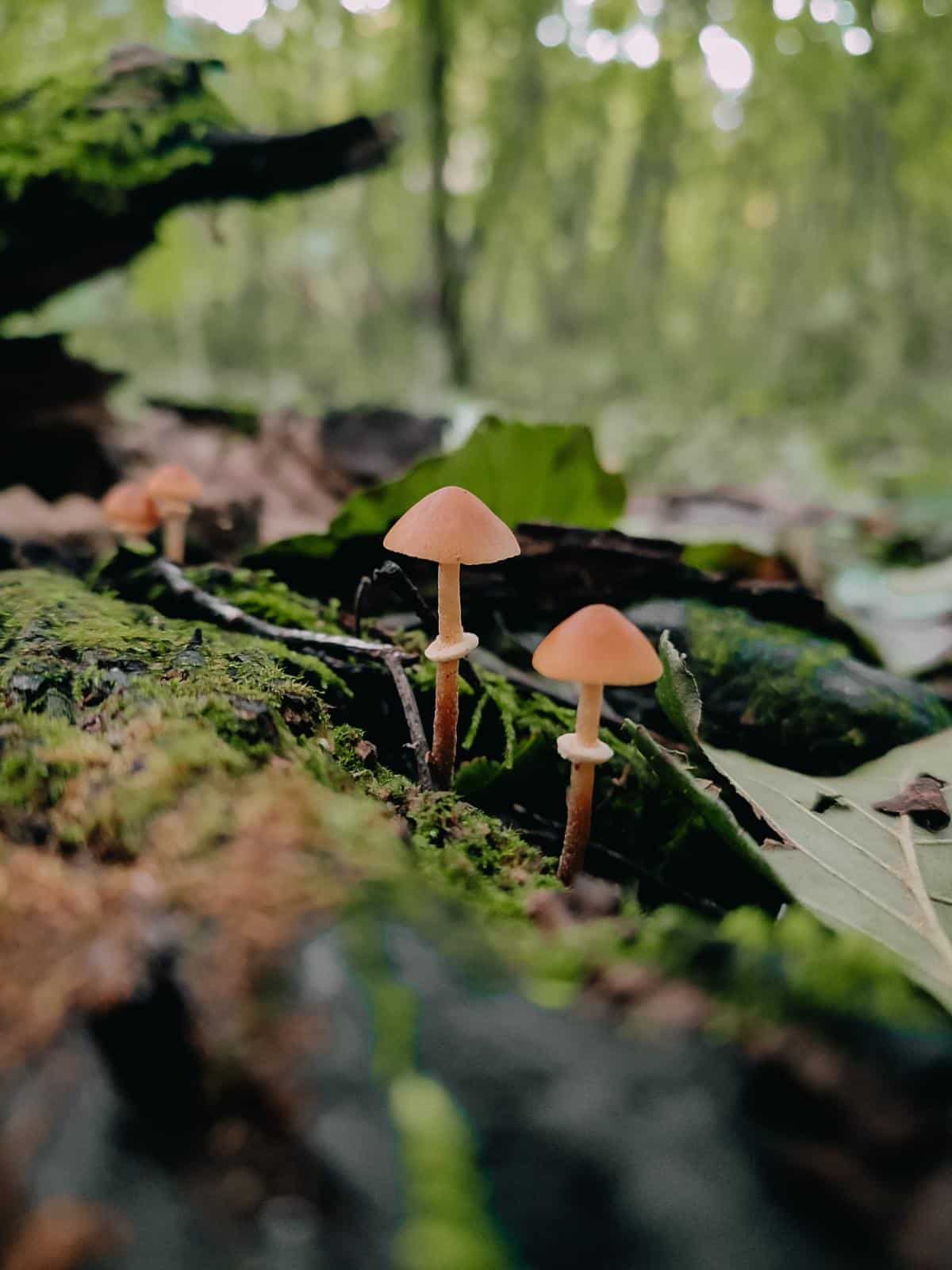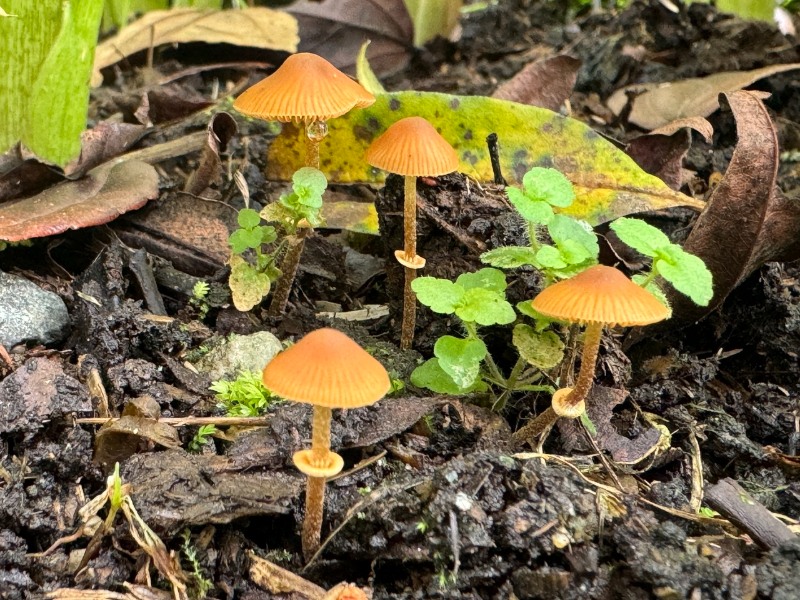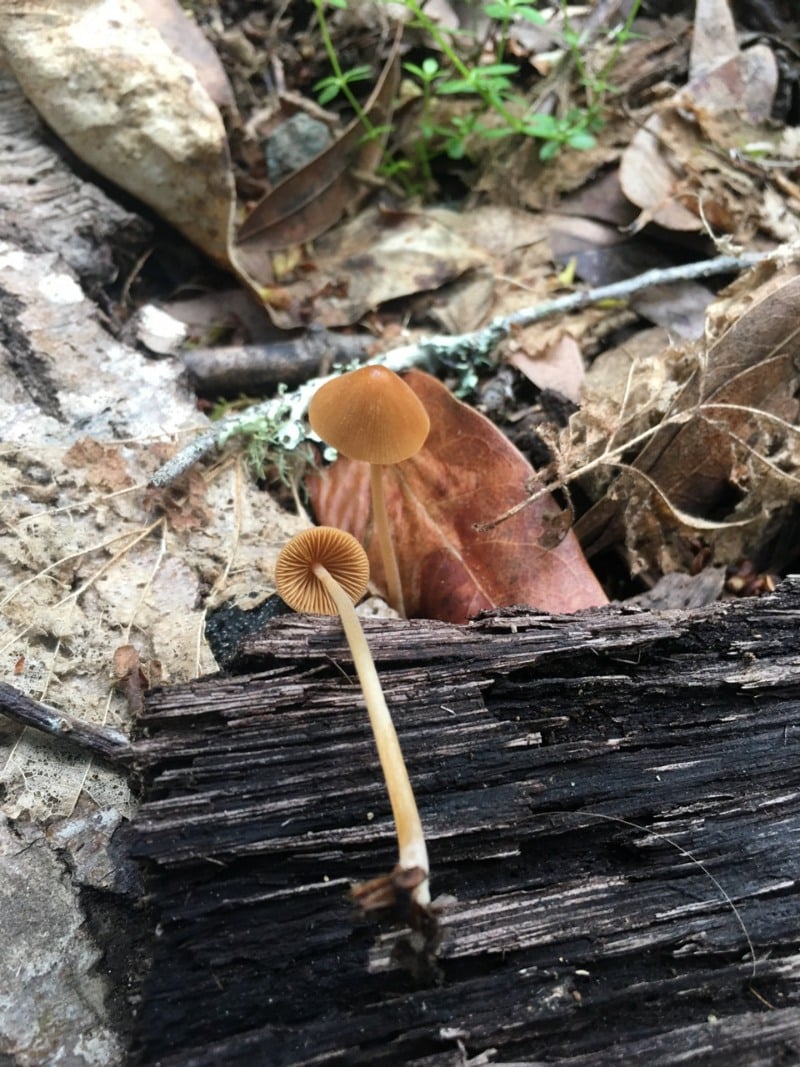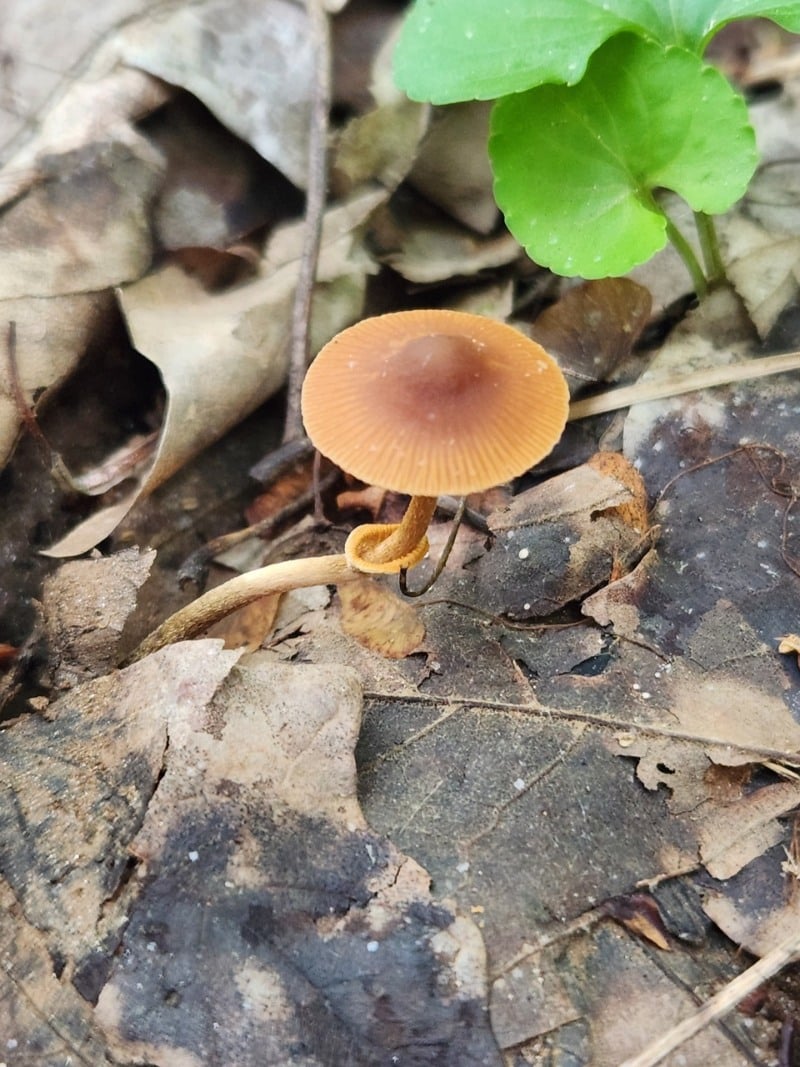This unassuming little common conecap is found across northern North America and yet easily overlooked. It looks a lot like other little brown mushrooms, colloquially called LBMs. The problem with this one is that it is extremely dangerous, containing the same toxin as the death cap mushroom.
This poisonous mushroom has been confused with Psilocybe mushrooms by those seeking the hallucinogenic experience. If you forager for, or are hoping to forage for, psychedelic mushrooms, make sure you are very familiar with the key identifying characteristics of this common conecap.
- Scientific Name: Conocybe rugosa or Pholiotina rugosa; Conocybe filaris or Pholiotina filaris might be synonyms.
- Common Names: Common Conecap, Fool’s Conecap
- Habitat: Decomposing organic matter like leaves, mulch, and compost.
- Edibility: Poisonous

Jump to:
All About Common Conecaps
The common conecap is a poisonous mushroom that occurs across North America, but it is more common in the northern states. And, it is particularly common in the Pacific Northwest up to Alaska. It fruits from wood chips, compost, and flower beds, which means it is commonly found in people’s yards. This increases its danger because young children and pets are more likely to encounter it.
If you identify this species in your yard and have children or pets, remove the mushroom straight away. You can just pick it up and dispose of it, and you don’t need gloves to do this. You can’t absorb the toxins by touching it – it has to be ingested. There are many lookalike little brown mushrooms (LBMS), and there’s no need to panic with everyone – look for the distinguishing characteristics of this particular dangerous species, and you’ll be able to remove it when you see it.
Initially, this mushroom was described by the American mycologist Charles Horton Peck in 1898 and placed in the genus Pholiota. However, in 1981, the British mycologist Roy Watling reclassified the mushroom, transferring it to the genus Conocybe, where it became known as Conocybe rugosa. Currently, you can see it in mushroom identification and guidebooks under Conocybe rugosa or Pholiotina rugosa. Which one is correct? It depends on who you ask.

Common Conecap Identification Guide
Season
The common conecap can be found fruiting from July through October in regions with a temperate climate. In the Pacific Northwest, it may fruit in winter as well.
Habitat
The common conecap is a saprotrophic fungus, meaning it derives its nutrients from decomposing organic matter rather than living hosts. These mushrooms are typically found growing scattered, gregariously, or in clusters on the ground. They’re often in close proximity to woody debris or areas with a high concentration of decaying plant material.
Common cone caps grow from the ground and never from wood or logs. They are common in mulch and compost piles, which means they’ll show up in yards, flower beds, and any other landscaped area.
Common cone caps grow in various regions of North America, including the northeastern United States, the Pacific Northwest, and parts of Canada. They are most common from northern California to Alaska and from upstate New York to Michigan.

Identification
Cap
The cap of the common conecap measures 1 to 2.5 inches in diameter. It starts off shaped like a cone and then flattens out with maturity. Often, it has a slight umbo (central bump). The surface can be smooth or faintly wrinkled, with a striate (lined) appearance when moist. The color ranges from tawny-brown to butterscotch-brown, with the edges often paler in color. The cap is hygrophanous, which means it changes color as it absorbs or loses water content. It is more brown when moist and fades to a cream-buff color when dry.
Gills
The gills of the common conecap are adnexed, meaning they are attached to the stem but do not run down it. These thin gills start off pale buff but gradually darken to a dull, rusty brown as the spores mature. The gill edges are lighter in color than the faces, and they may appear fimbriate (finely fringed) when young. There are lots of short and long gills – the short ones don’t reach the stem.
When the mushroom is very young, it has a partial veil covering the gills. As the mushroom grows, the veil breaks and leaves remnants around the gills and stem.
Stem
The stem measures between 1.5 to 5 inches in length and is slender and fragile. It is more or less equal in width, straight to slightly flexible, and hollow at maturity. The top of the stem is finely powdered and paler than the rest of it.
One of the most distinctive features of the common conecap is the lined grooved ring around the stem. The ring around the stem is a remnant from the partial veil that covered the gills when it was young. This ring, initially cream-buff in color, often becomes stained with rusty-brown spores as the mushroom ages, and it may eventually shrivel and disappear. It is uniquely striate, meaning you can see lines on the thin ring flesh.
Taste and Odor
The taste and odor of the common conecap are mild and not particularly distinctive.
Spore Print
The spore print is a dull, rusty-brown color.



Common Conecap Look-Alike Species
Common Cone Head (Conocybe tenera)
This species is extremely similar looking but has a more sharply conical cap shape and lacks the prominent stem ring of the common conecap. It is related, though, and is also inedible.

Funeral Bell aka Deadly Marginata (Galerina marginata)
While similar in appearance, the funeral bell is generally larger and grows on fallen logs rather than on the ground. Where it grows is a key differentiating factor. As you might have guessed by the common name, this mushroom is also extremely dangerous and should be avoided.

Agrocybe species
Various Agrocybe mushrooms can resemble the common conecap, but they typically have a more robust stem and a more pronounced central bump on the cap. This isn’t always the case, though. The common fieldcap or lawn mushroom is a prime example of a similar-looking Agrocybe species. It also grows in similar enough habitats that they can be easily confused.

Lawnmower mushroom (Panaeolus foenisecii)
The lawnmower mushroom is small and brown and grows in lawns and mulchy areas. However, it does not have a central bump on the cap—it is cone-shaped without an upraised center. With age, the center actually indents a little bit. It also doesn’t have a ring around the stem.

Tubaria species
Certain Tubaria mushrooms may share some visual similarities with the common conecap, but they can be distinguished because they usually grow from decomposing wood. Some do grow in soil, but it is less common. Their gills are also more widely spaced than the common conecap. No species in this group are edible (they’re so small they’re not worth it either).

Common Conecap Edibility
The common cone cap is deadly poisonous due to the presence of amatoxins, the same deadly compounds found in the notorious destroying angel mushroom (Amanita bisporigera). Consumption of this fungus can lead to severe liver damage and potentially fatal consequences, and it should be strictly avoided.
Amatoxins are especially dangerous because the onset of symptoms can range anywhere from 6-24 hours, and often, there is a period of recovery between mild symptoms and severe ones. This often makes people believe they’re on the mend when they definitely are not.

Removing Common Conecaps From The Yard
Common conecap mushrooms are not harmful to yards, compost, or mulched areas. In fact, they help break down organic matter and recycle nutrients back into the soil, which is a good thing. The presence of these mushrooms means you have a yard rich in nutrients and organic material.
A lot of people may not appreciate the appearance of these little mushrooms on their lawns and want to get rid of them. If you have kids or animals, this is a very good idea considering the toxicity of the species. However, eradicating common conecaps from your yard is nearly impossible, as they feed on the organic matter that is present.
If you’re determined to remove the common conecaps, the best method is to pick and discard them. This won’t stop them from every showing up again, but it will remove the immediate threat. Every year, you’ll have to be diligent if they show up, which they probably will.
When you pull the mushroom, you are only removing the external part of the it. The mushroom’s “roots,” known as mycelium, stretch underground, often for long distances. To get rid of the mushroom, you’d have to dig up all the mycelium, i.e., your entire yard.
So, since you probably don’t want to dig up your property, just pluck and remove these mushrooms when you see them and keep an eye out for when they reappear — usually about the same time each year. You don’t need to wear gloves to remove the mushrooms; the toxin is only deadly if you eat it.

Common Questions About Common Conecaps
Is the common conecap mushroom medicinal?
There is currently no known or documented use of the common conecap in traditional or modern medicine.
Are Conocybe mushrooms edible?
There are over 50 Conocybe species in North America; some are edible, some are hallucenogenic, and some are deadly. Before hunting, foraging, or consuming any mushrooms in this genus, be extremely certain of your identification.









Sukhbinder Singh Soor says
Confusing and wondering. I needed to establish distinctive features that prevent a novice from picking these to consume. Hunting through the whole description was difficult.
Jenny says
Indeed, many mushrooms are complicated to ID